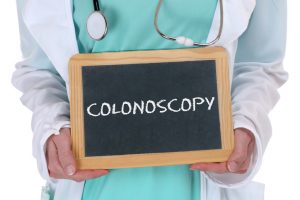Colonoscopy vs. Cologuard: The Differences
 By Dr. Gregory Lam –
By Dr. Gregory Lam –
Screening for colon cancer can be lifesaving, so getting yourself tested is important. However, patients should be aware there are big differences between a traditional colonoscopy and the Cologuard test.
Cologuard, the at-home colon cancer screening test that has been heavily marketed, has become a popular option due largely to its convenience – it can be performed without extensive preparation and does not require fasting. However, home-based stool-sample tests have raised concerns because they are not as accurate as colonoscopies, meaning they are more likely to produce false positives or negatives.
With colorectal cancer being the third leading cause of cancer-related deaths among men and women, according to the American Cancer Society, patients should know the facts before making a choice about this serious screening test. After all, nearly 150,000 new cases of colorectal cancer are predicted in 2021.
Let’s look at each procedure to explore the differences.
Differences in How the Tests Detect and Prevent Cancer
- During a colonoscopy, the gastroenterologist inserts a narrow flexible tube, equipped with a lighted camera, through the rectum and gently into the colon, or large intestine. The camera relays a clear view of the intestinal lining so the doctor can look for inflammation, ulcers, and polyps – slow-growing masses that can become cancerous. Polyps are removed in this process and sent to a lab for examination. By removing the polyps as part of the procedure, you are removing the future potential for cancer itself. A colonoscopy is both a diagnostic and preventative procedure.
- Cologuard examines the cells the colon sheds from its lining, which are passed in the stool. The patient uses a provided kit to take a stool sample at home and then sends the sample to a lab. Cells that are cancerous may have DNA changes in certain genes, which Cologuard is designed to detect. Abnormal cells or blood in the stool may indicate cancer or precancerous growths. If cancer is detected, the patient will need to have a colonoscopy performed for further exploration. It has been estimated that the false positive for Cologuard can be up to 12%.
Differences in Turnaround Time
- Colonoscopy: A gastroenterologist can inform the patient of the presence of any polyps or abnormalities as soon as the patient arouses from anesthesia. If polyps or tissue are removed, the patient will typically receive test results within two weeks.
- Cologuard: It typically takes two weeks from the date the patient ships the stool sample to receive the test results, which will be provided by the patient’s healthcare provider. While the timeframe is still the same for notification, patients using Cologuard are a step behind because cancerous polyps have not yet been removed.
Differences in Accuracy
- Colonoscopy: The U.S. Multi-Society Task Force on Colorectal Cancer (MSTF) has ranked the colonoscopy first, or Tier One, of the various types of tests for colorectal cancer screening. Because it is the only screening test that can both detect and prevent cancer (by removing polyps), research shows colonoscopies reduce the incidence of cancer by 89%.
- Cologuard: One in 13 patients who use this screening kit may have a cancer that the test will miss, according to a New England Journal of Medicine study of 10,000 patients. The research further indicates Cologuard will miss more than 30% of polyps that will soon become cancer, and nearly 60% of larger polyps that may become cancer.
Differences in Expense
- Colonoscopy: As a preventive screening test, a colonoscopy is covered by most major medical plans, including the Affordable Care Act and Medicare (which covers 100%). However, some plans may not cover all the associated services, such as anesthesia, so we advise patients to check with their insurers in advance to prepare for potential costs.
- Cologuard: The at-home test may be covered by insurance, and if it is not, it’s about $600. However, if test results are positive (including false positives), the patient will require a follow-up colonoscopy that may not be fully covered by insurance. Because such follow-up colonoscopies have determined 45% of positive Cologuard results are actually false positives, we recommend all patients check coverage with their insurers.
One Clue that Makes a Big Difference in Test Choice: Risk
Although it is normal to be reluctant to undergo colonoscopy, it is a routine procedure with a low risk of complications. The colonoscopy preps have gotten easier to take and more effective. The gastroenterologists at Cincinnati GI have a lot of experience and expertise in providing a safe, high-quality exam with minimal discomfort.
Screening for colon cancer with a stool test is an attractive option, but by the company’s own admission is not a replacement for diagnostic colonoscopy or surveillance of high-risk individuals. If you have a history of colon cancer, colon polyps, inflammatory bowel disease, family history of colon cancer, or certain hereditary syndromes, Cologuard is not for you. If these risks to not apply to you, you should still consider a colonoscopy as a first-line test.
A colonoscopy’s ability to detect and prevent cancer is soundly evident. The convenience of Cologuard is evident as well. Here’s what we suggest: When weighing the pros and cons of each, ask yourself: Which would I want my loved ones to choose?
